I am writing this article at twenty weeks pregnant. Growing up as an only child, without younger cousins or siblings to play with, I had very little exposure to pregnant people or babies. The last four months have been a huge learning curve while experiencing my first pregnancy, so I decided to share a pregnancy tips article with 20 surprising things I learned in my first 20 weeks of pregnancy, catering my pregnancy tips for first time moms.
In this article, you’ll find pregnancy tips for your first trimester and beyond, and things that I wish I perhaps learned sooner. I’ll share pregnancy symptoms I experienced, tests I took, advice for maternity wear, recommendations on baby furniture, and the thought process behind other decisions I made. I’m only halfway through my pregnancy, but there’s still so much more to learn; I’m taking it week by week and hopefully you will too!
One thing’s for sure: pregnancy as portrayed in the media (movies, TV shows) is not reality. I very quickly learned that the best teachers are recent new moms (or other pregnant women), many of whom are more than willing to share their advice and experience, like I am in this article.

1) Pregnancy test results are not always crystal clear
Your pregnancy test results are not always crystal clear. I had a bulk pack of 100 ovulation strip tests and 20 pregnancy strip tests purchased from Amazon. When I tested on the first day of my missed period, I had a very faint second line and wasn’t sure how to interpret the results. I read online that ANY visible line was still an indication of pregnancy, and if there was any uncertainty, to test again in a few days. Cautious of celebrating too early, I tested for seven days in a row and saw the line get darker each day.
As you can see in the screenshot below, there’s a faint second line on the first day I tested, it wasn’t a crystal clear result that results in shouts of joy that you see in the movies. After I was certain I was pregnant with a “big fat positive” (you’ll often see the term BFP used in baby forums), the next thing I did was call my family doctor to ask her what to do next.
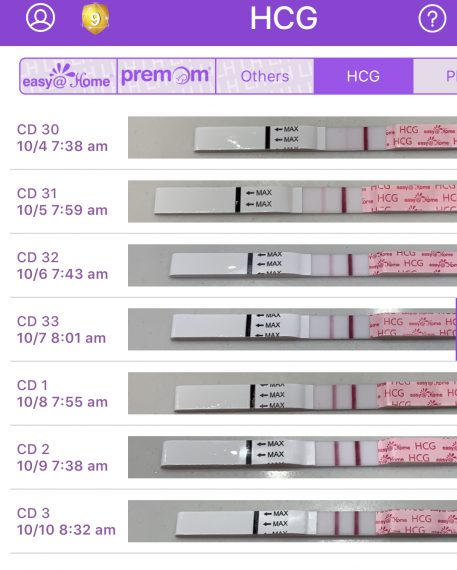
2) Early pregnancy feels surreal
You get two lines on a pregnancy test. You get blood tests to confirm your rising HCG levels. Your test results show positive, but your body might not physically feel any different in the first few weeks of pregnancy. The first several weeks of pregnancy feels surreal as there’s not much physical “proof” to convince you that you’re actually pregnant. The first time pregnancy became a solid reality for me, was at my first ultrasound (around seven weeks) when they could detect a fetal heartbeat. “Cautiously optimistic” was how we described our attitude in early pregnancy.
3) Your early ultrasounds could be vaginal
Forget what you see in movies, where a wand is rubbed on your big, bare belly and a baby shows up on the screen. The first ultrasound I received was at 7-8 weeks when I still had a flat stomach and no baby bump. Also, it was a vaginal ultrasound, meaning I had to put a lubed up wand inside of me. When the embryo is so small, the ultrasound gets a better view when the device is in you, rather than through your belly.
They printed out a photo of the ultrasound for me. The embryo looked like a little prawn or bean and the technician had to point out to me where the head was. There was a blur where the brain was currently developing. It didn’t look like a baby at all.
4) You typically only get two visual ultrasounds during your pregnancy
Getting ultrasounds is something I thought would be a regular occurence in pregnancy, as that’s something that’s so often portrayed in the media. Turns out, most low-risk pregnancies only have two ultrasounds throughout the nine months.
The first ultrasound is a ‘dating’ ultrasound (between 7 to 10 weeks) where they measure the size of your embryo to get a more accurate estimate of your due date, instead of using the date of your last period, which is typically inaccurate.
The second is around 20 weeks, and that’s where the ultrasound picture actually resembles the baby and they do a count of fingers and toes and other things to check up on the health of the baby. If you don’t already know, the 20 week ultrasound is when you typically find out the sex of the baby as well.
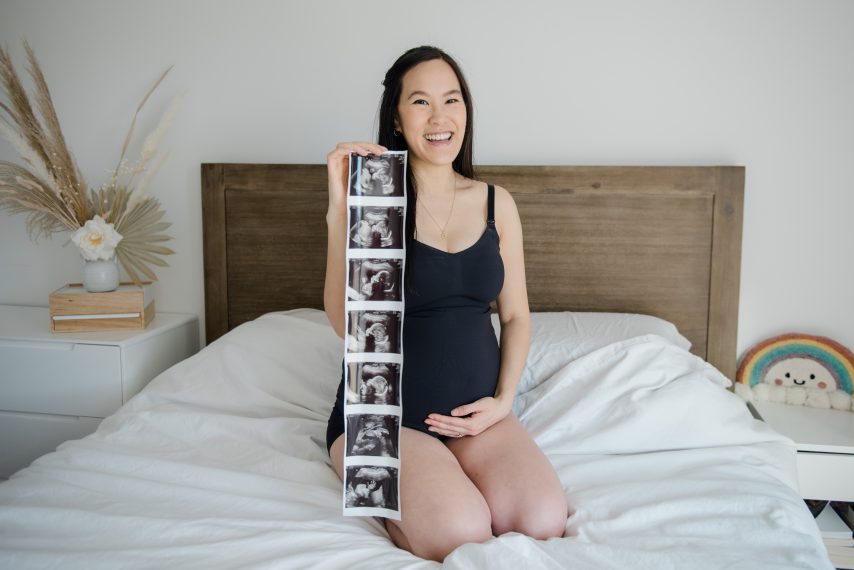
5) Morning sickness is an all-day occurrence
I could write an entire article on nausea during pregnancy. Most common in the first trimester, “morning sickness” can be an all-day occurrence. Around six weeks, I started feeling nauseous, I was making a roasted butternut squash soup with lots of garlic, retching as I was stirring the pot. Nausea doesn’t just hit in the mornings, it can hit any time of day, and there’s not always a trigger. It’s just your fluctuating hormones, sigh. In general, don’t get too hungry, don’t get too full. Eat bland foods. Find the (few) things you can eat, and stick with them, even if it’s not nutritionally balanced.
I actually found that I felt best in the mornings, especially after getting a good night’s rest. I would start feeling sick in the afternoons and evenings, especially from the smells of dinner cooking. In fact, when we took evening walks around dinner time, I would start retching if I could smell any homes or restaurants cooking. I have been, (and continue to be, even at 20 weeks) very sensitive to smells.
Something I found slightly encouraging: in the first trimester, my doctor told me nausea is a good thing, it’s a sign that your hormones are functioning and you’re getting bodily reactions to pregnancy.
6) You don’t need to double your food intake when you’re “eating for two”
Advice to eat more because you’re “eating for two” is not correct. In your first trimester, you don’t require any extra calories to grow that little bean inside of you. In fact, it’s not unusual for some women to lose weight in their first trimester, due to nausea, lack of appetite, and not being able to keep food down. In your second trimester, you only need about 200 to 300 extra calories a day.
7) You need to decide: Midwife or OBGYN?
Also something else I didn’t think about: who is delivering the baby? For all my early appointments and blood tests, I went through my family doctor. I didn’t consider that I would have to pick or choose who is conducting the actual baby delivery.
You need to find out if your family doctor does deliveries. My friend’s GP, for example, does deliveries, but her doctor was part of a birthing group that rotates, and she only had a 1 in 30 chance of getting her actual GP at her delivery. Thus, she went with a midwife instead.
In general, midwives are known to provide more “customer service” — time, attention, and empathy — than your average physician. They are formally trained as healthcare professionals and specialize specifically in providing comprehensive care to women during pregnancy, labour, birth, and postpartum, some even providing home visits. Midwives are registered with and regulated by the College of Midwives of BC (CMBC) and need to go through ongoing re-certification and training to maintain their status.

If you’re looking for a midwife, better act fast. Many of the midwife groups in Vancouver fill up and have waiting lists. I started calling at 10 weeks or so. I am signed on with Westside Midwives. But I’ve also heard excellent things about: The Midwifery Group, Pomergranate Midwives, and Pacific Midwifery Practise. The more you research, the more you realize how similar they all are, so my recommendation is to go with a clinic that’s geographically close to you.
- For more information about BC Midwives, visit: https://www.bcmidwives.com/faq.html.
8) What is a doula?!
The term ‘doula’ will eventually come up in conversation. They are a birth coach. This will be your expert cheerleader, providing emotional and physical support, while you give birth. Also, this doula is also there to support your birth partner (in my case, my husband). Apparently you have to interview a few to find the best fit for you. Everyone says ‘connection’ with your doula matters the most. Do you want a coach that’s more like a friend, or more like a coach, or more like a mother? Sounds hippy dippy. Not something I would have ever considered. At 20 weeks now, I have decided that this is something I’d like to invest in, and I am just now starting the process of looking for a doula.
- For more information about BC Doulas, visit the BC Doula Services Association at: http://www.bcdoulas.org.
9) You can hire a birth photographer
I’m not talking about newborn photography, I’m talking about a photographer that’s present while you’re giving birth. That’s something that didn’t even cross my mind as something you could invest in.
This isn’t something you need to commit to in your first 20 weeks of pregnancy, but, if this is something you would like, you’ll likely have to pick a doula that doubles as your professional birth photographer (especially during Covid, where you can only have a limited number of people in the birthing room with you).
10) There’s a way to find out the sex of your baby early
Taken at 9 or 10 weeks or later, an NIPT test is a blood test that checks for the genetic liklihood of For Trisomy 21 (Down Syndrome), Trisomy 18 (Edwards Syndrome), and Trisomy 13 (Patau Syndrome). But an added perk is that you also get to find out the sex of your baby with the test results.
NOTE: The sex is revealed if you do the $500 paid version (Harmony or Panorama) of the NIPT test. If you choose to do the free government version, you don’t find out the sex of the baby.

11) Buying maternity wear? Prioritize versatility
As you look to buy new clothes that accommodate your growing bump, prioritize versatility and invest in pieces that you can continue to wear after pregnancy. Sizing up in high waisted and supportive leggings like the Lululemon Aligns or the AE Offline “Real Me” high-waisted leggings are popular options among pregnant women. Or, look to buying long, open, cardigans and oversized jackets which’ll continue to be in style, long after your pregnancy. If you are shopping at a maternity-wear store, ask if there are maternity pieces that’ll convert for post-partum; for example: tops that easily pull down for nursing.
- More on Modern Mix Vancouver: Looking for versatile maternity wear in Vancouver? Check out: Hazel & Jools: Made in Canada Maternity Wear
12) You’ll likely grow out of your bra during pregnancy
I thought a lot about maternity clothes like leggings or long shirts or open cardigans, but didn’t think about new bras. If you need to size up in a bra during your pregnancy, my recommendation is to get a bra that converts to a nursing bra, such as the Plunge Nursing Bra or the Body Silk Seamless Nursing Bra from Canadian bra brand Bravado. You can wear it throughout pregnancy, and then after giving birth, the strap unhooks from the front so you can easily pull down for nursing. This versatility increases the longevity of a new bra you may invest in during pregnancy.
- More on Modern Mix Vancouver: Not pregnant? Bravado also has a comfortable bra line for the every day woman
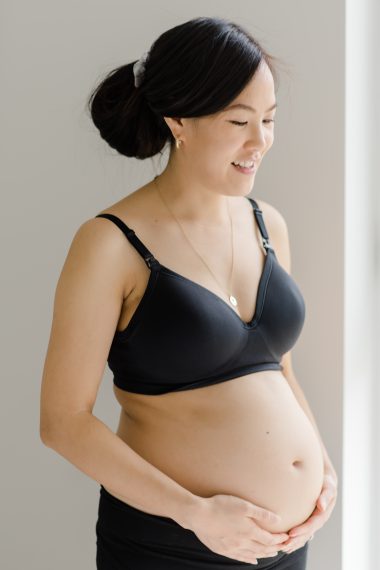
13) The second trimester is considered the ‘vacation’ trimester
Most people’s favourite trimester is the second. One new mom mentioned that a week 13, her nausea disappeared like clockwork. Someone else mentioned that she wished she could stay 13 weeks pregnant forever. Apparently her body temperature was like Hawaii: just perfect. Another friend said weeks 20 to 27 were her favourite. At 20 weeks, I definitely feel better than I did a few weeks ago. I certainly don’t feel excellent, I am still tired, bloated, and occasionally nauseous, but I’m functional. There are good days and bad days.
14) Before kicking, there are flutters
Feeling the baby kick for the first time is another symbolic milestone in pregnancy. However, before kicking, there are ‘the flutters’, which most pregnant women will begin feeling at around 18 to 20 weeks. What do pregnancy flutters feel like? Women will describe this feeling under their bellybutton like the soft flapping of butterfly wings, ripples of water, a little fish swimming around, bubbles, or the soft vibration of a cellphone in you. Sometimes this is mistaken for gas, but as the weeks pass, they should happen more frequently and become more recognizable. I felt my first ‘ripples’ at 19 weeks or so.
15) The crib is not the first thing to buy for a nursery
Many moms-to-be start decorating in the second trimester because they have more energy and are more nimble and spry compared to what’s coming in the third trimester.
You’d think a crib — somewhere for the baby to sleep — would be the first thing to buy for a nursery. My thinking: if you’re decorating your own bedroom from scratch, wouldn’t a bed be the first thing you look for? WRONG, turns out babies don’t even sleep in a crib for the first few weeks or months. Some moms don’t even purchase a crib until after their baby is born. You’d be better off prioritizing a “bassinet”, which is a small portable bed that newborns typically sleep in.
16) The mattress is more important than the crib
Before we were enlightened with the knowledge that babies don’t sleep in cribs right away, we did extensive research on cribs and saw that pricing could range anywhere from $200 to $1,500+. To a certain extent, a crib is priced very much based on brand and aesthetics. What you should be picky about, is the quality of the mattress that goes in the crib as that is what provides the comfort for baby, not the crib itself.
- More on Modern Mix Vancouver: Obasan Organic Crib Mattress Review
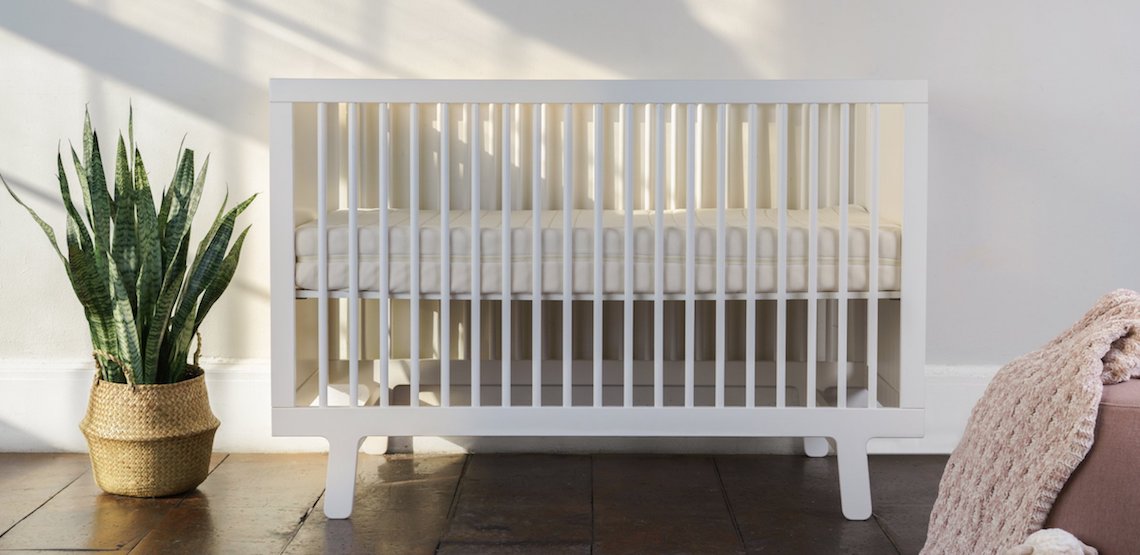
17) 3-in-1 or 4-in-1 convertible cribs often require extra parts
I was intrigued by the longevity and practicality of “convertible” cribs that turn from a crib, to a toddler bed, to a day bed, and then eventually to a full-sized twin or double bed. Sounds like a good investment to make, right? NOT ALWAYS. We were told at the kids’ store that you typically have to buy extra parts to ‘convert’ the crib, you’ll still need to invest in a larger size mattress to get to the full-sized bed, and some of the extra parts required are discontinued by the time you need them. You could buy all the convertible parts right away, but then you’ll have to store them until the time comes.
Another thing for consideration, if you plan on having another baby, you may want to hand down the crib to the younger sibling, rather than converting into a larger bed.
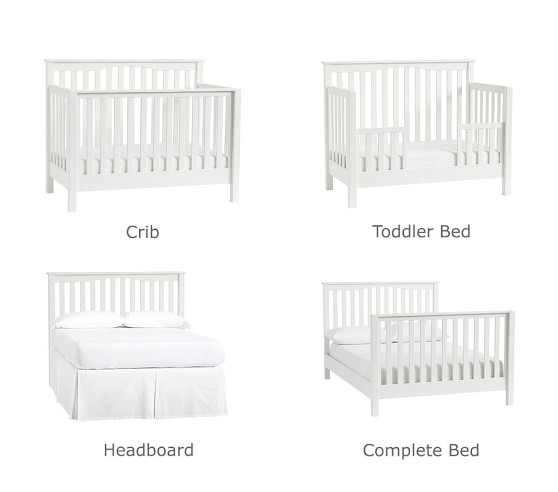
18) Don’t overbuy clothes, stuffies, and books
Apparently those will be the most common items that people will gift you when they don’t know what specifically to purchase for you as a gift. I’d hold off on buying any of those things yourself, as you’ll likely receive more than enough as gifts. At 8 weeks pregnant, we already received a onesie, a baby book, and a stuffed toy for Christmas.
Also, when you look at photos of nurseries, you often see cute stuffed animals or blankets or other decor items in the crib. Something I learned in passing was that babies shouldn’t sleep with any of these toys or decor items in their crib, as there is a risk of suffocation.
- More on Modern Mix Vancouver: Looking for a gift for yourself during pregnancy? Check out the: Oh Mother Canadian Gift Box for Pregnancy, Post Partum, and Beyond.
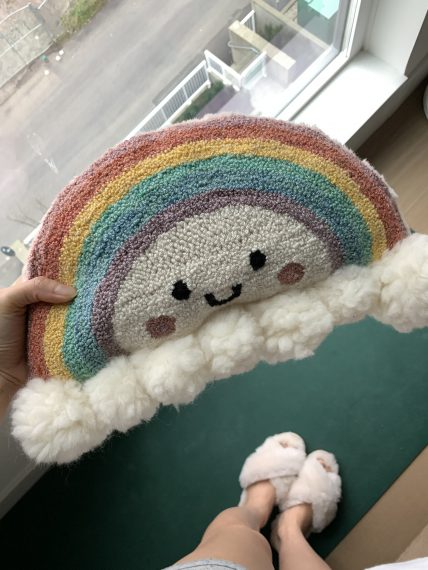
19) Don’t tell people your list of baby names
Naming your baby is not something you need validated by other people, so don’t make the mistake of telling others your ideas for baby names. You’ll never reach a consensus where everyone agrees, or you might end up with a name ‘sticking’ before you’re ready to commit.
20) Trust the advice of new, recent moms
And finally, when seeking guidance on your journey, trust the advice of new, recent moms who share your modern values. Yes, our own moms have all been through pregnancy, but their experience came from 20 to 30+ years ago and there have been a lot of advances in coping with pregnancy, birth practices, and all things to do with babies since then. I found that the best, most relevant, helpful, and encouraging advice I’ve received thus far has been from new moms who have recently given birth and can share with you the latest and greatest.
I reconnected with old coworkers, neighbours, clients, friends of friends — everyone was so helpful and more than willing to share their experiences, product recommendations, and more. New moms have done SO MUCH RESEARCH (look at how much I’ve already learned and shared in this article!) that they are experts — it’s like they’ve gone through war and survived, and can now proudly share their experience and survival tips to newbies like me.





